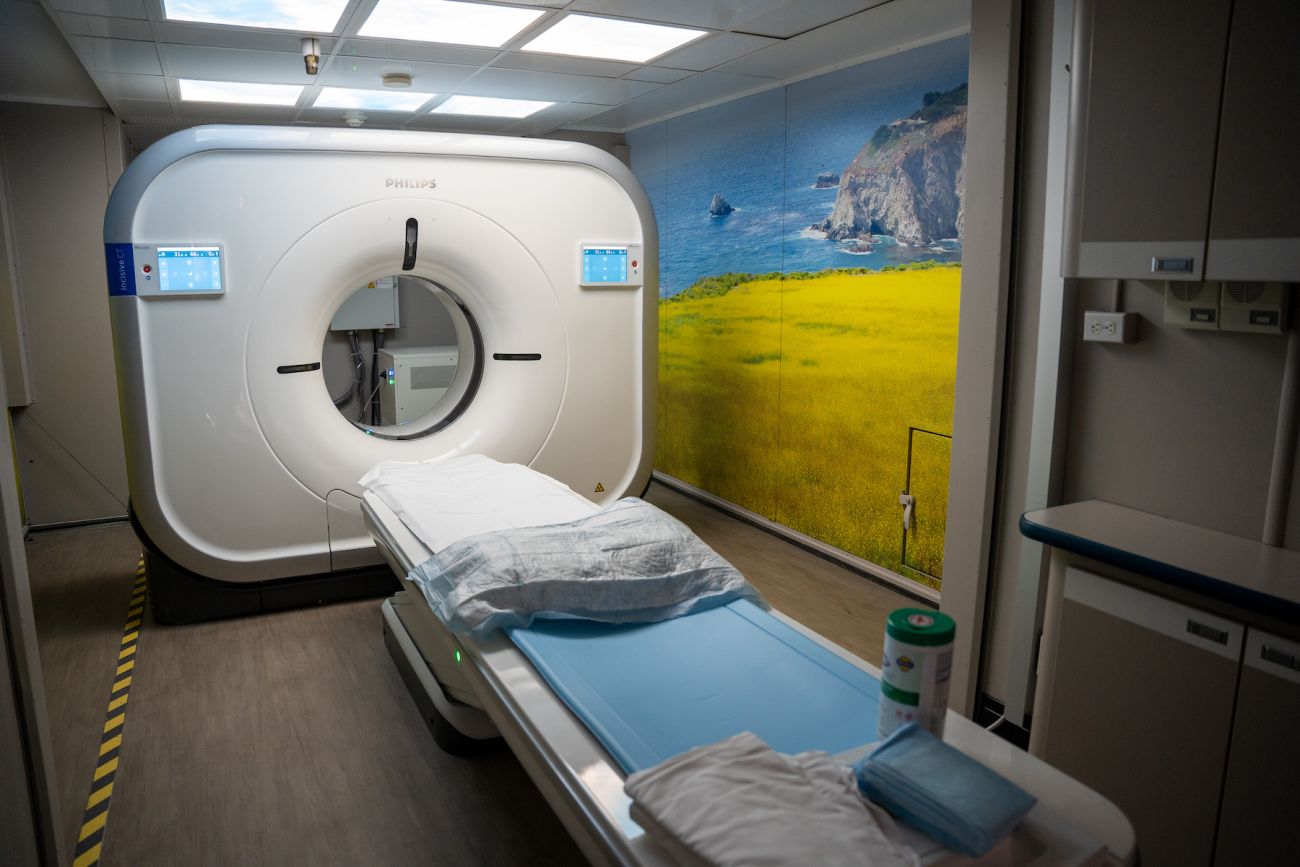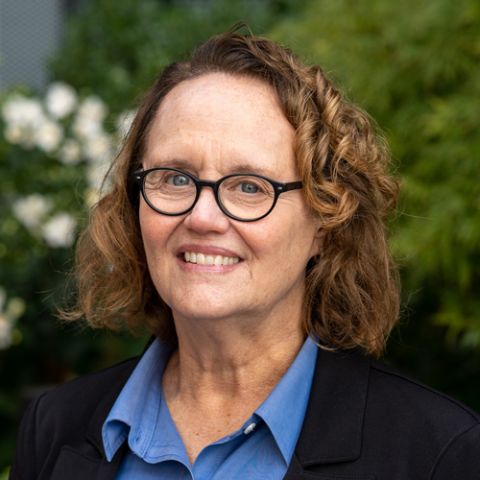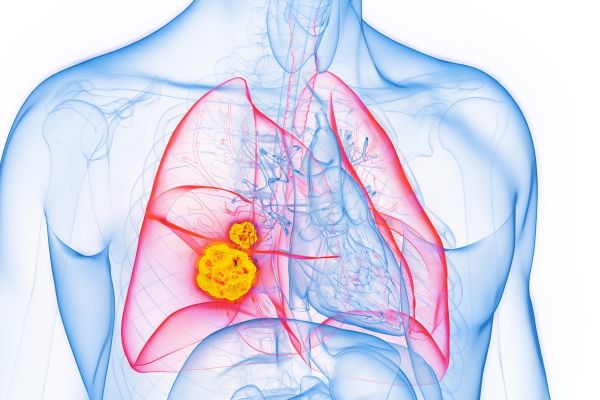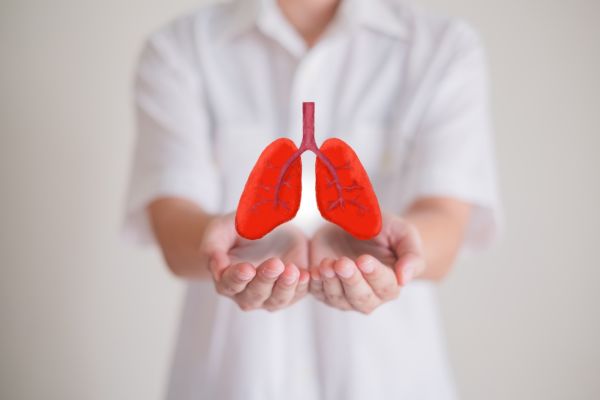Lung cancer screening often finds nodules in the lungs which need to be evaluated and monitored for cancer
Early detection offers the best chance of survival for most kinds of cancers, including lung cancer, but less than 20% of people across the United States who are eligible for screening are currently undergoing this potentially life-saving test.
By comparison, 80% of women get an annual mammogram to check for breast cancer, while 60% of adults over the age of 45 get regular colonoscopies to detect colorectal cancer.
Screening means more cancer diagnoses are early stage
Roswell Park leads the way locally for increasing New York State’s lung cancer screening rate to 18% of eligible people, from just 10% a decade ago. Since the launch of Roswell Park’s mobile lung cancer screening center, called EDDY (Early Detection Driven to You), more than 2,800 people have received lung cancer screenings, leading to a growing number of early-stage diagnoses.
“This year, 51% of lung cancer diagnoses at Roswell Park were found at an early stage. It’s a really big deal,” says Mary Reid, PhD, Chief of Cancer Screening and Survivorship at Roswell Park Comprehensive Cancer Center.
A low-dose CT scan (like an X-ray but better) can identify nodules, small, round growths of tissue within the lungs that might be an indicator of lung cancer. Finding and testing those nodules for cancer can help lead to a diagnosis at an earlier stage, when more treatment options are available and the chance of survival is greatest. An estimated 70% of people who have lung cancer screening will have a nodule found during their test.
Does a lung nodule mean cancer?
No. “The majority of them are not cancer, but they have to be followed until you’re sure it’s not a cancer," says Dr. Reid.
Lung nodules may be caused by a number of conditions aside from cancer, such as infections, autoimmune disease, or exposure to asbestos or other environmental pollutants. They are also more common in older adults.
“If you get bronchitis, you most likely have some nodules in your lungs,” says Dr. Reid. “A large majority of people we screen have absolutely nothing wrong with them but they might have a scattering of bits of nodules. The problem is, you can’t differentiate whether that is actually a cluster of cancer cells. That’s why you have to watch them over time to check whether they grow or change in any way.”
How are lung nodules monitored?
Nodules that don’t seem immediately suspicious need to be followed with another CT scan in six to 12 months, depending on the size of the nodule and its density — whether it’s solid or semi-solid.
Solid nodules appear opaque on the scan and are less likely to be cancerous. Semi-solid nodules, however, contain a mix of dense and less dense tissue, and are more likely to be cancerous. Semi-solid nodules usually need more frequent scans to monitor.
What if I need a biopsy?
Lung nodules that need further evaluation will require a biopsy (a sample of the nodule tissue) so that pathologists can analyze and accurately diagnose it. Roswell Park offers several minimally invasive options for biopsy of lung nodules, including bronchoscopy and endobronchial ultrasound.
For very small nodules and those located deep in the lungs, a new technology — robotic bronchoscopy — can reach and biopsy these nodules safer and less invasively and without surgery than ever before.
No lung nodules found?
Great! Your first screening scan will be used as a baseline scan — against which your future scans will be compared. Because you’re still at high risk for developing lung cancer, you should have annual lung cancer screening for as long as determined appropriate by your clinical team. In the meantime, we can help you quit smoking for good and take other steps to improve your health and lower your risk for cancer.
Check out EDDY
EDDY is outfitted with state-of-the-art screening technology to bring life-saving cancer screening to those who need it most, especially medically underserved and racially diverse populations.
Reducing barriers to screening
The inability to access low-dose CT screening, coupled with the guilt that might be felt by tobacco users, are among the biggest barriers to screening.
“Anyone who is age 50 or older, who has smoked in the past 15 years or smoked for 20 years, is eligible for lung cancer screening,” says Dr. Reid. Many doctors might not know their patients are eligible, which could prevent some people from accessing screening.
The distance to healthcare facilities also plays a role, as does the sense that someone “deserves” lung cancer for their tobacco use. “It’s really important that people put that guilt and shame aside. Everyone deserves to get screened. No one deserves to have lung cancer,” she says.
EDDY, Roswell Park’s mobile lung cancer screening center, brings lung cancer screening to neighborhoods across the region. "People can sign up for appointments when the van will be in their community. If needed, Roswell Park doctors can redirect patients to other locations for screening as well."




